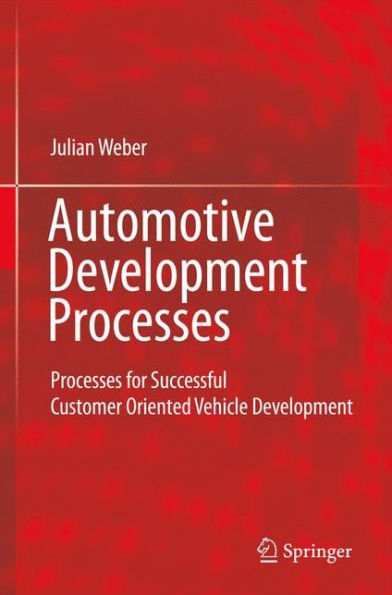5
1
9783642012525


Automotive Development Processes: Processes for Successful Customer Oriented Vehicle Development / Edition 1 available in Hardcover

Automotive Development Processes: Processes for Successful Customer Oriented Vehicle Development / Edition 1
- ISBN-10:
- 3642012523
- ISBN-13:
- 9783642012525
- Pub. Date:
- 07/08/2009
- Publisher:
- Springer Berlin Heidelberg
- ISBN-10:
- 3642012523
- ISBN-13:
- 9783642012525
- Pub. Date:
- 07/08/2009
- Publisher:
- Springer Berlin Heidelberg
199.99
In Stock

Product Details
| ISBN-13: | 9783642012525 |
|---|---|
| Publisher: | Springer Berlin Heidelberg |
| Publication date: | 07/08/2009 |
| Edition description: | 2009 |
| Pages: | 312 |
| Product dimensions: | 6.10(w) x 9.25(h) x 0.03(d) |
About the Author
From the B&N Reads Blog
